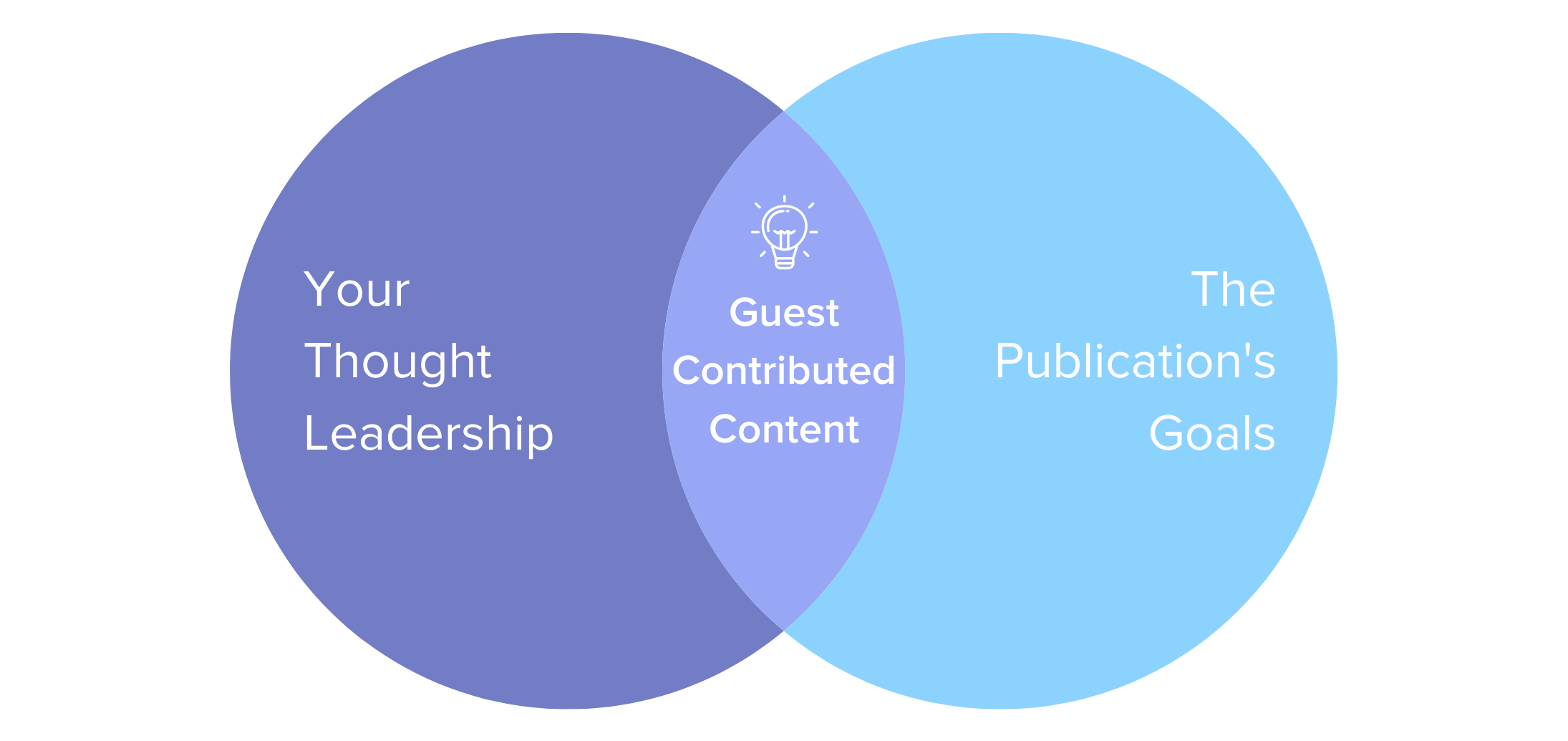
How to See Marketing Results Through Guest Posting
How to See Marketing Results Through Guest Posting
Alyssa Patzius, Vice President of Sales • Intero Digital • April 29, 2020
Marketing and the media have always had a symbiotic relationship. Media outlets allow marketers to connect with, advertise to, and learn about their target audiences. In content marketing, savvy marketers also use the media machine as a marketing tool.
Guest-contributed articles are bylined pieces of content that are published in media outlets. Authors write the pieces using their own expertise or knowledge. Most publications are operating with smaller editorial staffs, thanks to the public’s ongoing transition away from traditional media, and guest posting is one way editors can supply insightful content to their readers.
As earned media, guest-contributed articles help your content marketing strategy in several functions, including lead generation, thought leadership, and SEO.
Because guest-contributed content can be a key touchpoint in a brand’s content strategy, regardless of its primary content marketing goal, it can be tempting for marketers to focus only on how the content will help their own brands. They forget about the other half of the equation: helping publication editors reach their goals.
What Guest-Contributed Articles Are Not
Publication editors won’t entertain article pitches if the content doesn’t bring value and unique insights to their readers. Therefore, editors will often have a strict list of guidelines that protect the publication’s own brand. It’s possible to find topic ideas that meet both your needs and the publication’s needs, but that requires deliberate strategy.
But to devise the right topics, you can’t confuse guest posting with other content marketing tactics. Remember, guest posts are not:
- Sponsored content. Sponsored content and native advertising typically don’t fall under the guest-contributed article umbrella. With #SponCon, your content performs based on dollar amount, not on the ideas you present.
- Pay-to-play. Some publications essentially sell bylined spots to contributors. Media outlets that allow individuals and agencies to pay for placement typically aren’t upholding journalistic integrity. Because readers value transparency and authenticity, this usually doesn’t sit well — it’s kind of like buying follow bots on social media.
- Public relations. Even though marketers work with publication editors to secure both press mentions and guest-contributed articles, these serve different functions. In press mentions, an external party is talking about what makes you newsworthy, which provides third-party validation.
- Promotional. Guest posts are earned media, so you don’t get as much control in what you can include in the piece as you would in content being published on your own blog, for example. Publication editors want to provide educational, factual, authentic, and helpful content to their readers — not a sales plug.
How to Meet Publications’ Expectations and Achieve Your Goals
Even though most news outlets now primarily focus on digital publishing and don’t have to worry about physical space within the publication, an article still has to be worth the time and resources the editorial staff will spend on it.
At the same time, it’s vital that your guest-contributed articles help you work toward your own marketing goals. It’s probably not worth your time to write articles for the sole purpose of pleasing publication editors — just like it’s not worth editors’ time to publish articles that don’t meet the publication’s goals. You have to find a happy medium.

Here’s how you can make sure your guest-contributed articles serve both your content marketing goals and the publication’s goals:
1. Find the middle ground.
Draw your own Venn diagram on a piece of paper (or touch screen, if you’re fancy). In your thought leadership circle, write down a few keywords and ideas that are key to your marketing strategy. Then, spend some time looking at the publication(s) you’d like to be published in. Think about what standards, values, and requirements the publication’s content seems to fulfill. What types of stories are you seeing? What topics do readers engage with most? What does the publication consider its core values? Write those ideas in the publication circle. This represents what your article pitch must cover in order to please the publication editor.
Once you’ve filled out both sides, it’s time for the magic to happen. Think about what the sides of the diagram might have in common. Can you draw connections between the ideas on either side? Is there a way you can talk about what’s important to your content marketing goals that will also excite publication editors? You probably can’t make both sides perfectly happy, so find that happy medium.
2. Home in on your unique commentary.
Editors value guest-contributed articles because the authors are considered sources of expertise. You can provide additional commentary on topics the publication’s readers care about. To meet that need, you need to discover what unique insights you can offer.
Think about what insights you can share that are unique to your experience or expertise. Even if you’re writing about a ubiquitous idea, consider what you, specifically, can bring to the discussion. Can you relate with a personal story? Do you have a different viewpoint from what you’ve read about the topic? Have you had particular success with a process or tool that others might benefit from (remember, you can’t promote your own company as the only solution!). Make the article unique to your perspective, and you’re well on your way to creating guest-contributed content that connects with publication editors and works toward your goals.
3. Be willing to take risks.
Publication editors receive dozens — if not hundreds — of article pitches every day. Your job (or our job at Intero Digital) is to convince the publication editor that your topic is worth the time and resources the publication staff will spend on it. It has to be more worthwhile than the dozens of article pitches the editor already has in his or her inbox.
Sometimes, authors don’t want to discuss provocative or controversial ideas in guest-contributed articles because they’re afraid of alienating their target audiences. But publication editors want content that will push the conversation forward. They need cutting-edge articles that will inspire clicks, discussions, and tweets. There are a million articles about the “best” remote work tips, but there probably aren’t many articles that advise having everyone wear costumes for internal meetings. Which one do you think the publication editors might be more interested in investing in?
Think about it this way: Which one would you click on? If your goal is a byline in a major publication, you might have to become more comfortable with pushing the envelope.
Guest-contributed articles a core component of a robust content marketing strategy, but it can be easy to forget that they’re earned media. So the next time you’re creating content for external publications, use the Venn diagram approach to make sure you’re balancing the publication’s needs with your own marketing ambitions.

